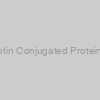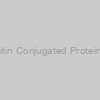4 Host, apoptosis, array, Assay, Bafilomycin A1, Blocking, Ch 223191, Choline Acetyltransferase Antibody, Deoxycholic Acid Sodium Salt, GMO, Green, Guinea, Mip 1B, Pamabrom 100Mg, Pepstatin A, Phospho 4Ebp1, plasmid, Plate, Valproic Acid Sodium Salt
Water Administration Alters Cadmium Isotope Fractionation between Shoots and Nodes/Leaves in a Soil-Rice System
The drainage of rice soils will increase Cd solubility and leads to excessive Cd concentrations in rice grains. Nevertheless, plant Cd uptake is proscribed by sorption to iron plaques, and Cd redistribution within the plant is regulated by the nodes. To raised perceive the interaction of Cd uptake and redistribution in rice below drained and flooded situations, we decided steady Cd isotope ratios and the expression of genes coding transporters that may transport Cd into the plant cells in a pot experiment.
In soil, each water administration practices confirmed comparable patterns of isotope variation: the soil answer was enriched in heavy isotopes, and the foundation Fe plaque was enriched in gentle isotopes. In rice, the leaves had been heavier (Δ114/110Cdleaf-shoot = 0.17 to 0.96‰) and the nodes had been reasonably lighter (Δ114/110Cdnode-shoot = -0.26 to 0.00‰) relative to the shoots below flooded situations, indicating preferential retention of sunshine isotopes in nodes and export of heavy isotopes towards leaves.
That is usually reversed below drained situations (Δ114/110Cdleaf-shoot = -0.25 to -0.04‰, Δ114/110Cdnode-shoot = 0.10 to 0.19‰). The drained therapy resulted in considerably greater expression of OsHMA2 and OsLCT1 (phloem loading) however decrease expression of OsHMA3 (vacuolar sequestration) in nodes and flag leaves relative to the flooded therapy.
It appeared that OsHMA2 and OsLCT1 may preferentially transport isotopically heavier Cd, and the surplus Cd was purposefully retranslocated through the phloem below drained situations when the vacuoles couldn’t retain extra Cd. Cd in seeds was isotopically heavier than that in stems below each water administration practices, indicating that heavy isotopes had been preferentially transferred towards seeds through the phloem, leaving gentle isotopes retained in stems.
These findings display that the Fe plaque preferentially adsorbs and occludes gentle Cd isotopes on the foundation floor, and distinct water administration practices alter the gene expression of key transporters within the nodes, which corresponds to a change in isotope fractionation between shoots and nodes/leaves.
A easy and speedy ICP-MS/MS willpower of sulfur isotope ratios ( 34 S/ 32 S) in complicated pure waters: A brand new software for tracing seawater intrusion in coastal techniques
Typical sulfur isotope measurements in complicated pure liquid or stable samples through GS-IRMS are difficult, time consuming and comparatively costly. Right here we assessed a novel ‘collision cell’ primarily based ICP-MS/MS strategy which may decide the sulfur isotope abundances (i.e., 34S/32S ratios, expressed as δ34S) in complicated coastal waters quickly, precisely and with minimal pattern preparation. The strategy was validated through repeated ICP-MS/MS measurement of S isotope licensed reference supplies (CRM) offering correct and reproducible outcomes, with a typical uncertainty on δ34S of round 1.1-1.5‰ (1SD). This novel strategy is appropriate for water samples with sulfur concentrations at or above 2 μg/mL (ppm).
Matrix matching between samples and the CRM was needed when seawater-like options had been analysed addressing frequent matrix associated errors. The ICP-MS/MS strategy was used to analyze δ34S signature of porewaters from a wide range of coastal techniques in South Australia (together with acid sulfate soils), and the way they responded to progressive seawater inundation.
Importantly, inundation induced a shift in S isotope ratio in affected porewaters through which δ34S approached that of seawater. The easy pattern preparation, with speedy and correct δ34S willpower of complicated pure waters utilizing the ICP MS/MS strategy, vastly will increase the applicability of sulfur isotope tracing research to establish and monitor sources and bio-geochemical pathways of S in coastal and near-surface environments.

Retrospective evaluation of wooden anatomical traits and tree-ring isotopes suggests site-specific mechanisms triggering araucaria araucana drought-induced dieback
In 2010-2018 Northern Patagonia featured the longest extreme drought of the final millennium. This excessive dry spell triggered widespread progress decline and forest dieback. Nonetheless, the roles performed by the 2 main mechanisms driving dieback, hydraulic failure and carbon hunger, are nonetheless not clear and understudied on this seasonally dry area.
Right here, for the 1800-2017 interval, we apply a retrospective evaluation of radial progress, wooden anatomical traits (lumen space, cell-wall thickness) and δ13 C and δ18 O steady isotopes to evaluate dieback causes of the enduring conifer Araucaria araucana. We chosen three stands the place declining (defoliated) and non-declining (not defoliated) timber coexisted alongside a precipitation gradient from the warm-dry Coastal Vary to the cool-wet Andes.
In any respect websites declining timber confirmed decrease radial progress and decrease theoretical hydraulic conductivity, suggesting a long-lasting means of hydraulic deterioration of their water transport system in comparison with non-declining, coexisting timber. Wooden anatomical traits evidenced that this divergence between declining and non-declining timber began a minimum of seven many years earlier than cover dieback.
Within the drier stands, declining timber confirmed greater water-use effectivity all through the entire interval, which we attributed to early stomatal closure, suggesting a higher carbon hunger threat according to thinner cell partitions. Within the wettest stand, we discovered the other sample.
Right here, a discount in water-use effectivity coupled with thicker cell partitions urged elevated carbon assimilation charges and publicity to drought-induced hydraulic failure. The δ18 O values indicated completely different methods of gas-exchange between websites that are probably a consequence of microsite situations and water sources.
Multi-proxy, retrospective quantifications of xylem anatomical traits and tree-ring isotopes present a sturdy software to establish and forecast which stands or timber will present dieback or, quite the opposite, which can probably stand up to and be extra resilient to future hotter droughts.
Unravelling Lipoprotein Metabolism with Steady Isotopes: Tracing the Move
Dysregulated lipoprotein metabolism is a significant case of atherosclerotic heart problems (ASCVD). Use of steady isotope tracers and compartmental modelling have offered deeper understanding of the mechanisms underlying lipid problems in sufferers at excessive threat of ASCVD, together with familial hypercholesterolemia (FH), elevated lipoprotein(a) [Lp(a)] and metabolic syndrome (MetS). In sufferers with FH, deficiency in low-density lipoprotein (LDL) receptor exercise doesn’t solely impair the catabolism of LDL, but in addition induces hepatic overproduction and reduces catabolism of triglyceride-rich lipoproteins (TRLs).
Sufferers with elevated Lp(a) are characterised by elevated hepatic secretion of Lp(a) particles. Atherogenic dyslipidemia in MetS sufferers pertains to a mix of overproduction of very-low density lipoprotein-apolipoprotein (apo) B-100, decreased catabolism of apoB-100-containing particles, and elevated catabolism of high-density lipoprotein-apoA-I particles, in addition to to impaired clearance of TRLs within the postprandial state. Kinetic research present that weight reduction, fish oils, statins and fibrates have complementary modes of motion that right atherogenic dyslipidemia.
Defining the kinetic mechanisms of motion of proprotein convertase subtilisin/kexin sort 9 and angiopoietin-like three inhibitors on lipid and lipoprotein mechanism in dyslipidemic topics will additional our understanding of those therapies in lowering the event of ASCVD. “Every part modifications however change itself. Every part flows and nothing stays the identical… You can’t step twice into the identical river, for different waters and but others go flowing ever on.”Heraclitus (c.535- c. 475 BC).
 T7, Biotin conjugated |
|||
| AS15-2977 | Agrisera AB | 100 µg | EUR 443 |
 Urease, Biotin conjugated |
|||
| AS09-560 | Agrisera AB | 10 mg | EUR 401 |
 Lysozyme Biotin conjugated |
|||
| AR-6637-11 | ImmunoBioscience | 5mg | EUR 167.3 |
 Bromelain, Biotin conjugated |
|||
| AS09-553 | Agrisera AB | 10 mg | EUR 401 |
 Fibrinogen, Biotin conjugated |
|||
| IMS06-038-312 | Agrisera AB | 100 µl (1mg/ml) | EUR 348 |
 Biotin Conjugated Protein A |
|||
| BA1025-0.5 | BosterBio | 0.5ml | EUR 157.2 |
 Biotin Conjugated Protein A |
|||
| BA1025-1 | BosterBio | 1ml | EUR 242.4 |
 Biotin Conjugated Protein G |
|||
| BA1026-0.5 | BosterBio | 0.5ml | EUR 279.6 |
 Biotin Conjugated Protein G |
|||
| BA1026-1 | BosterBio | 1ml | EUR 486 |
 PPI | papain, Biotin conjugated |
|||
| AS09-546 | Agrisera AB | 10 mg | EUR 401 |
 Biotin Conjugated Protein A |
|||
| BA1025 | BosterBio | 0.5ml | EUR 80 |
 Biotin Conjugated Protein G |
|||
| BA1026 | BosterBio | 0.5ml | EUR 180 |
 Biotin Conjugated Protein G |
|||
| MBS176618-05mL | MyBiosource | 0.5mL | EUR 260 |
 Biotin Conjugated Protein G |
|||
| MBS176618-1mL | MyBiosource | 1mL | EUR 430 |
 Biotin Conjugated Protein G |
|||
| MBS176618-5x1mL | MyBiosource | 5x1mL | EUR 1780 |
 Biotin Conjugated Protein A |
|||
| MBS176715-05mL | MyBiosource | 0.5mL | EUR 175 |
 Biotin Conjugated Protein A |
|||
| MBS176715-1mL | MyBiosource | 1mL | EUR 240 |
 Biotin Conjugated Protein A |
|||
| MBS176715-5x1mL | MyBiosource | 5x1mL | EUR 925 |
 P Antibody, Biotin conjugated |
|||
| 1-CSB-PA768100LD01VBH | Cusabio |
|
|
|
Description: A polyclonal antibody against P. Recognizes P from Vesicular stomatitis Indiana virus. This antibody is Biotin conjugated. Tested in the following application: ELISA |
|||
 L Antibody, Biotin conjugated |
|||
| 1-CSB-PA806333LD01VBE | Cusabio |
|
|
|
Description: A polyclonal antibody against L. Recognizes L from Vesicular stomatitis Indiana virus. This antibody is Biotin conjugated. Tested in the following application: ELISA |
|||
 B1 Antibody, Biotin conjugated |
|||
| 1-CSB-PA882501LD01HKA | Cusabio |
|
|
|
Description: A polyclonal antibody against B1. Recognizes B1 from Human herpesvirus 6B. This antibody is Biotin conjugated. Tested in the following application: ELISA |
|||
 NP Antibody, Biotin conjugated |
|||
| 1-CSB-PA841983HD01RCI | Cusabio |
|
|
|
Description: A polyclonal antibody against NP. Recognizes NP from Reston ebolavirus. This antibody is Biotin conjugated. Tested in the following application: ELISA |
|||
 X Antibody, Biotin conjugated |
|||
| 1-CSB-PA865559LD01HEO | Cusabio |
|
|
|
Description: A polyclonal antibody against X. Recognizes X from Hepatitis B virus genotype D subtype ayw. This antibody is Biotin conjugated. Tested in the following application: ELISA |
|||
 TH Antibody, Biotin conjugated |
|||
| 1-CSB-PA023470LD01HU | Cusabio |
|
|
|
Description: A polyclonal antibody against TH. Recognizes TH from Human. This antibody is Biotin conjugated. Tested in the following application: ELISA |
|||
 TK Antibody, Biotin conjugated |
|||
| 1-CSB-PA023577HD01HWY | Cusabio |
|
|
|
Description: A polyclonal antibody against TK. Recognizes TK from Human herpesvirus 1. This antibody is Biotin conjugated. Tested in the following application: ELISA |
|||
 PC Antibody, Biotin conjugated |
|||
| 1-CSB-PA017511LD01HU | Cusabio |
|
|
|
Description: A polyclonal antibody against PC. Recognizes PC from Human. This antibody is Biotin conjugated. Tested in the following application: ELISA |
|||
 MB Antibody, Biotin conjugated |
|||
| 1-CSB-PA013529YD01HU | Cusabio |
|
|
|
Description: A polyclonal antibody against MB. Recognizes MB from Human. This antibody is Biotin conjugated. Tested in the following application: ELISA |
|||
 XG Antibody, Biotin conjugated |
|||
| 1-CSB-PA026190LD01HU | Cusabio |
|
|
|
Description: A polyclonal antibody against XG. Recognizes XG from Human. This antibody is Biotin conjugated. Tested in the following application: ELISA |
|||
 C5 Antibody, Biotin conjugated |
|||
| 1-CSB-PA003995LD01HU | Cusabio |
|
|
|
Description: A polyclonal antibody against C5. Recognizes C5 from Human. This antibody is Biotin conjugated. Tested in the following application: ELISA |
|||


